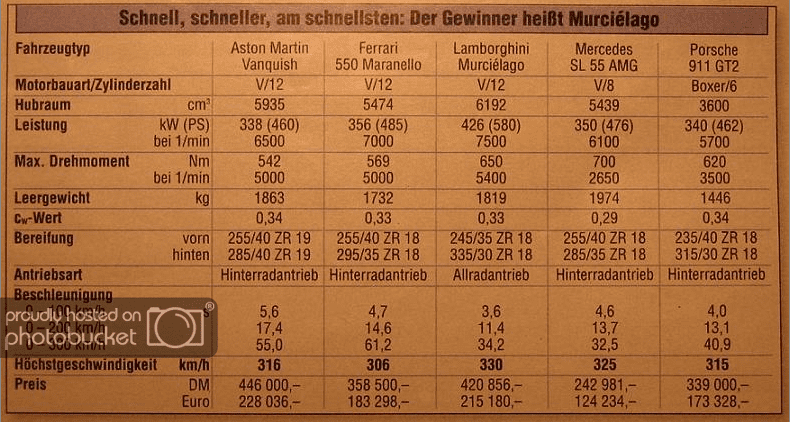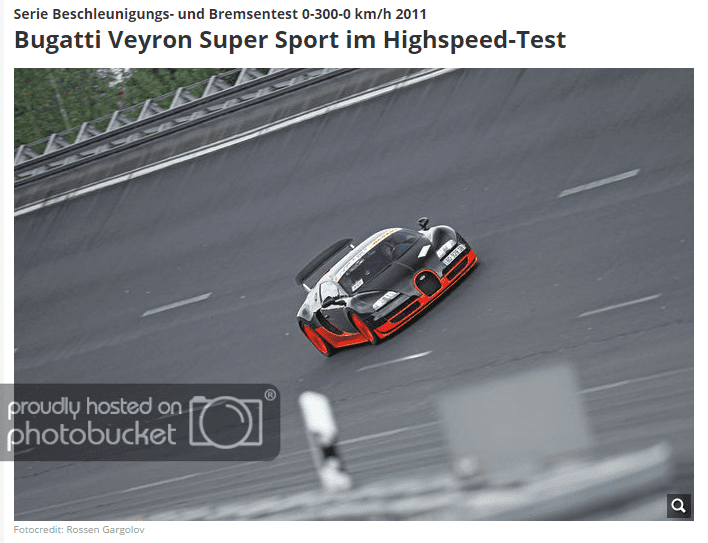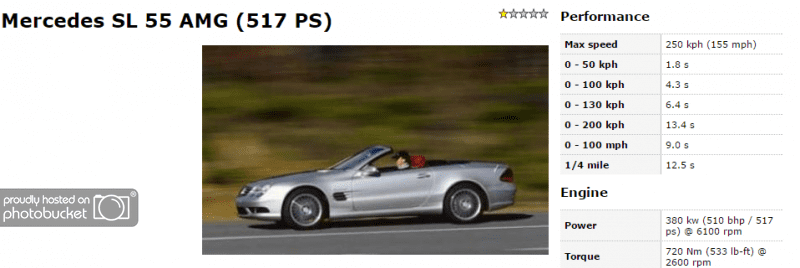MatskiMonk
(Banned)
- 18,029

- United Kingdom
** please note ** I'm not really trying to determine anything about the Veyron, simply demonstrate how the probably variables might interact.
@ALB123 Okay, so technically speaking, the original Veyron set a record at 253.81mph (113.632 metres per second). According to standard equations for Drag, at that speed a Veyron, at sea level (Ehra-leissen as a town is ~63m above sea level), with an air pressure of 100kPa, and at 15°C is experiencing 5802.176 N of resistant force thanks to drag. In order to overcome this drag, it requires 895.08 PS (metric Horsepower). SSRX at 12 noon is 27° from memory... so if we simply change the air temperature to 27°, the PS required to hit that speed drops to 859.28... or flipped over it would reach 257.36mph assuming everything else stayed the same.
Assuming PD use the same relatively simple equation for determining drag... they would include...
Air Temperature - We see that PD display the air temperature of the circuit at the start of the race, so let's assume they do factor this in to air pressure and therefore air resistance, in which case they need the following two things as well...
Air Pressure - I've assumed 100kPa - PD could use a constant, or a local average? this is required for Drag force.
Specific gas constant - This is a constant, I'm assuming PD base this on 'Dry' Air, adn therefore the value would always be the same... it would vary if we were talking about humid air for instance....
from these three things we get Air Density, so
Air Density - as above
Relative Velocity - i.e. the cars speed, although it's relative to the air the car moves through, so a head wind, or tail wind would have an effect. (5 mph tailwind takes the 859.28 PS above down further to 825.75 PS).. however the game doesn't appear to factor in windspeed... so this is just the car speed.
Drag Coefficient - 0.36 according to Bugatti when the car is hunkered down.
Frontal Area - 2.07m²
I would say this is not difficult, and I'm pretty sure that PD factor all this stuff in. The question of environmental conditions does mean that SSRX can give a different top speed to other tracks -- for instance if all fake tracks are considered to be at Sea Level for instance. They may use a constant Air pressure across all tracks, they might give each it's own air pressure, hell.. it could even be dynamic!
So, given that I think this would give a reasonable calculation... what else could the game be doing? The answer is probably, lots. But I'm focusing now on Aero-limited top speed.
What is that top speed? It's the speed measured by a real-world car, that will most probably have been at a different altitude, atmospheric pressure, temperature, probably with a wind-speed vector of some-sort.. and these are just the variables that affect the Aero calculation.
Where am I going with all this? Nowhere really, but @YZF it's all very well and good to say it's simple to achieve an accurate speed, but actually, it isn't. The more variables you factor in the harder it is to arrive at a value set in the real-world, because you have to make sure they all relate to each other properly, and to do that, you kind of need to factor in as many variables as you can... especially if you want it to be scaleable. If you simply set an equation for a car that says Vmax = 250mph The only thing you are simulating is the top speed (over any distance, over any time, in any state of tune, any gearing, any track, any conditions, , any wheel size, any surface, any tyres, any gradient, any slipstream)... and you're setting it to match a real-word value that was arrived at by the laws of physics using a massive amount of natural variables. You can fudge it, by having a table of values for every car, that sets waypoints for a time/displacement curve... but again, those points only simulate those points... the more you have to fudge, the more accurate the game may appear, but the less of a simulation it will be. As I've stated before, I think PD ad GT get the respect they do from manufacturers because PD attempt to do the job very realistically, but for whatever reason (hardware limitations) they don't arrive at the right answer...
Decided to do some further testing.
SSRX back straight, Stock Veyron, 245 mph to 36mph in 7th gear coast. First at 20°C, then at 27°C... deceleration curves were virtually identical. I therefore don't think the game uses air temp in it's air density calculations, and as such probably only uses a constant for air density in it's drag calculations.
edit: Also, RS over CS gave about 4mph benefit
edit II: Same circumstances... 150mph to 250mph with RS tyres on takes 5.334 s longer than with CS.
Last edited:






